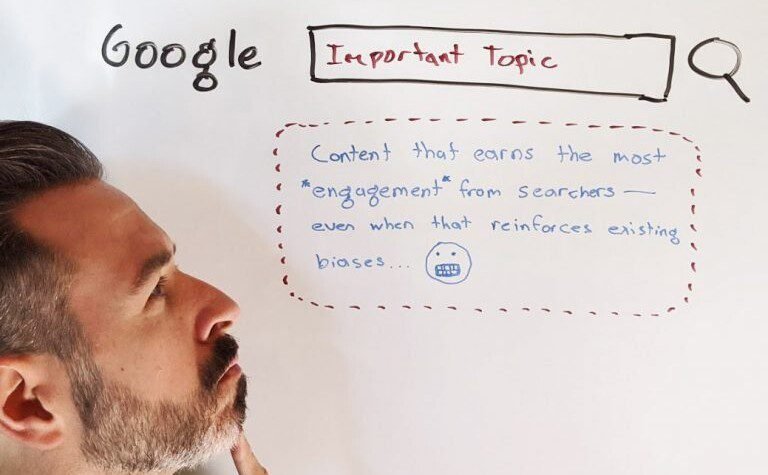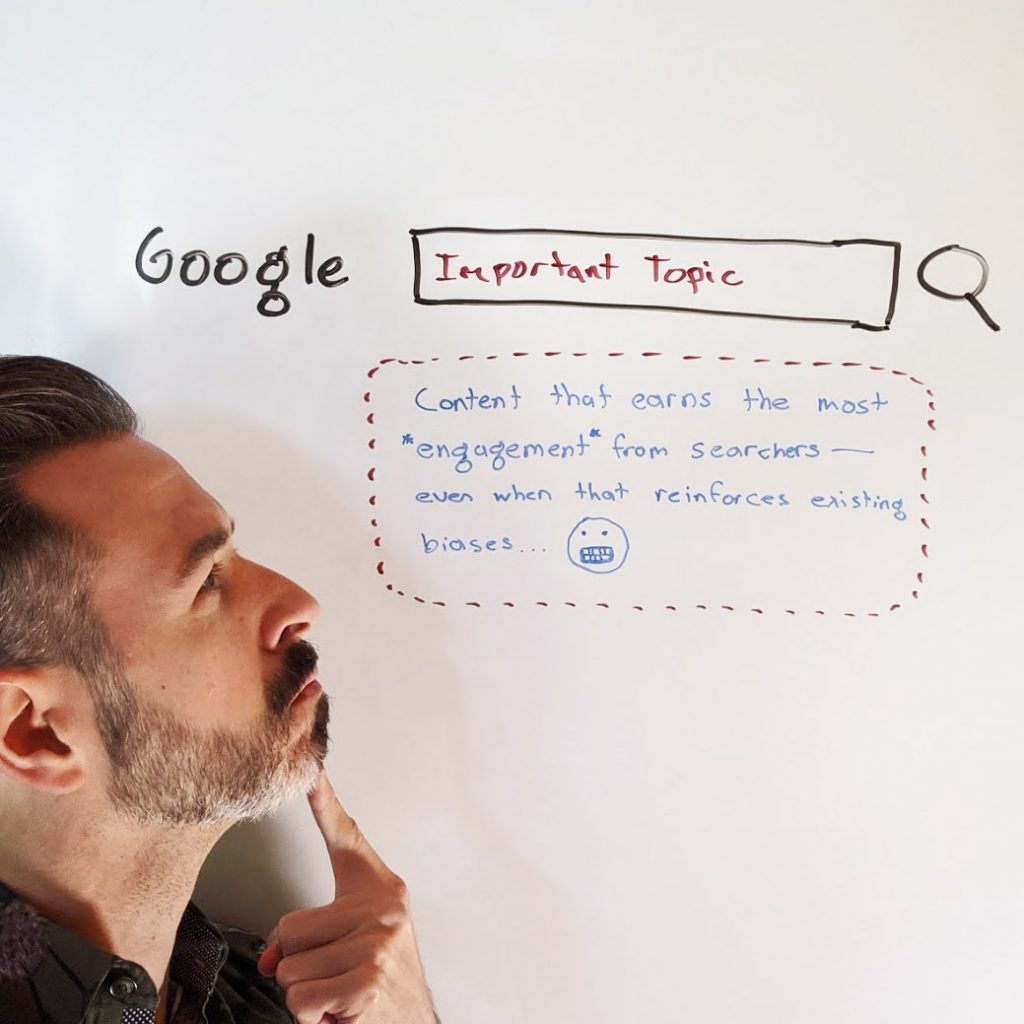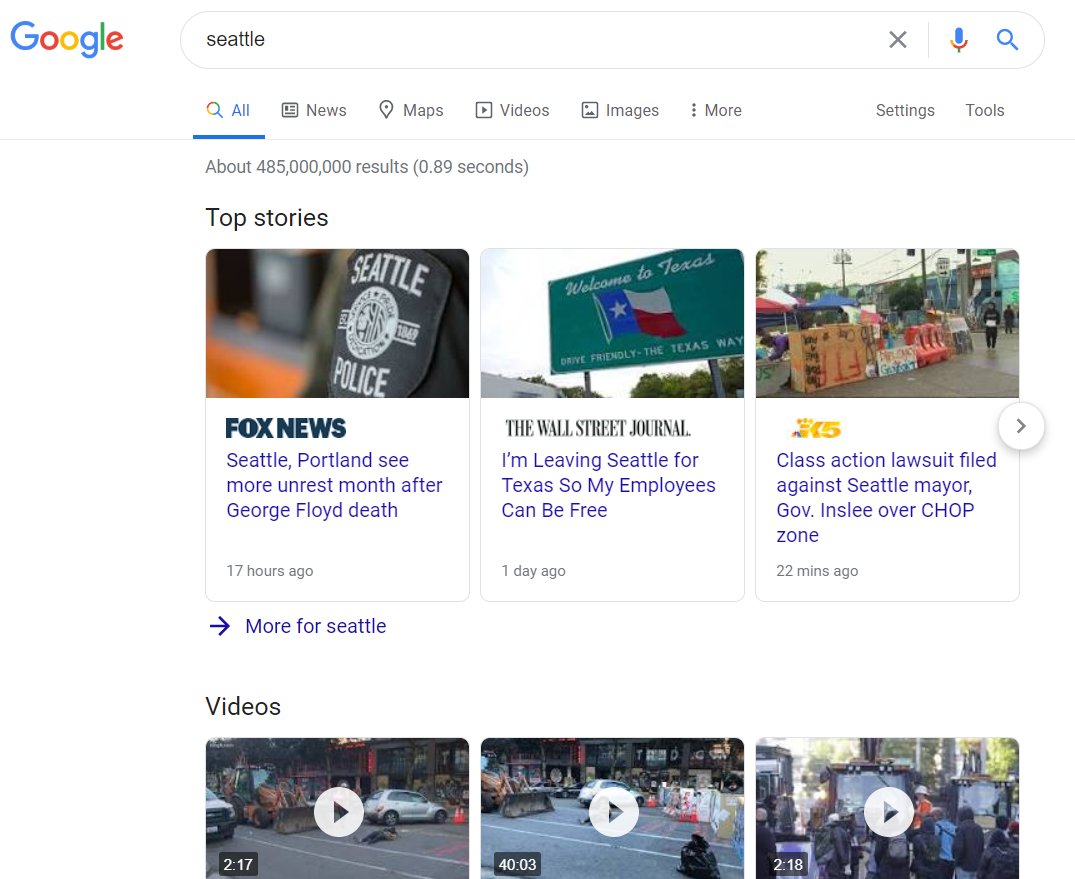
The Dirty Secret to Ranking #1 in Google (Part 3 of 3)
Years ago, one might reasonably separate the elements of Google’s results into distinct entities: Google News, Books, Videos, Images, Local… But today it’s near-impossible. The list of elements Google might show for a given query are so vast and varied that at the macro-level there’s really only three kinds of search results that matter:
1) Google-owned properties and answers (where earning traffic to one’s own website is difficult or impossible)
2) Paid results (those that come via Google’s advertising programs)
3) Organic, web listings (where earning traffic directly, or almost-directly to a third-party site *is* possible)
In Part 1 of this series, I covered Google’s own dominance of many rankings and in Part 2, talked about paid ads. In this piece, let’s discuss the final element: organic listings, those seemingly rare results in Google that can still, directly send traffic to a website not owned by the search monopolist.

So, what’s the secret to ranking #1 in these traffic-sending, unpaid results?
Engagement.
If your content results in higher engagement metrics than any other, especially if it does so either A) consistently over time for a significant portion of searchers or B) temporarily because of a spike in searches seeking your particular content, it will rise to the top of the non-paid results.

I illustrated this recently on Twitter with a search for the city of “Seattle,” a search that historically produced results like the tourism-focused VisitSeattle.org, the City of Seattle’s official government website, and the Seattle Wikipedia page. But searchers don’t want those results right now. There’s an entirely new group of searchers for the city name, and they want something very different from what past searchers sought.

Why is query volume for “Seattle” spiking? Because a number of right-wing news sources, online and off, are publishing news that stirs up fear, anger, and political conflict about a 6-block section of the city (incidentally, right outside my old apartment).

Over the last couple weeks, Fox News, in particular (a popular conservative TV network) has covered the area’s lack of policing with sensationalized and often-misleading (if not outright fictitious) stories. And during that same period, Fox’s website, or those affiliated with it, has almost always been on the first page of both news results and web listings.
My politics should be well known to readers of this blog by now, but politics isn’t the point here. Google’s rankings are. And this search is a superb example of how Google delivers what these conservative-driven searchers want, all other signals aside. But, it’s far from the only one.

When controversial topics spike in popularity and search volume, Google’s ranking systems respond in a number of ways:
1) The algorithm considers which types of content blocks to feature and where, potentially displacing web listings in favor of news results, images, videos, etc. (or the inverse).
2) Web listings in particular become more diverse, highlighting newly relevant results. Consider what happened when”Corona” searches switched from being primarily about beer to primarily about a pandemic. Or, more confusingly for Google, the query “Juice,” which tries to balance results about a beverage, several songs, a film, a band, and more.
3) Google’s “Query Deserves Freshness” (QDF) elements kick in, both as triggers of these shifts and as a potentially-useful filter for the results, highlighting more recent content over more authoritative (i.e. well-linked-to and engaged-with historically) works.
All of these use forms of engagement to trigger and to respond. Unfortunately, many web marketers, even those deep in the field of Search Engine Optimization (SEO) are generally hesitant or even outright dismissive of engagement signals in Google’s rankings. I think this stems mostly from Google’s own representatives, who frequently make claims that various individual signals connected to engagement (like a blanket click-through-rate or raw clicks themselves or bounce rate in Google Analytics) aren’t used.
Historically, I was able to prove the use of these signals in a series of live experiments. Since the 2013-2015 era, Google’s evolved and these types of simplistic calls to search+click at events and on Twitter haven’t worked as well. But, pick nearly any trending topic in the news or on social media, and you’ll witness Google’s rapid reaction to shifting searcher demand. Follow slower, but-still-evolving queries with changing searcher demand patterns and you can see it in non-current-events issues, too.

The Nintendo Switch game console, for example, has been notoriously difficult to find in stores since Christmas of 2019, and Google’s results reflect this reality. Both the presence of the “Top Stories” block and some of those same results in the web listings below, illustrate the focus on where availability can be found and the ongoing saga of production and distribution issues. Results about stock, distribution, and availability are rarely seen on other “buy product X” type queries, but they make sense, serve users, and therefore are prominent for the Switch’s SERPs.
What inputs does Google use to do this?…

















